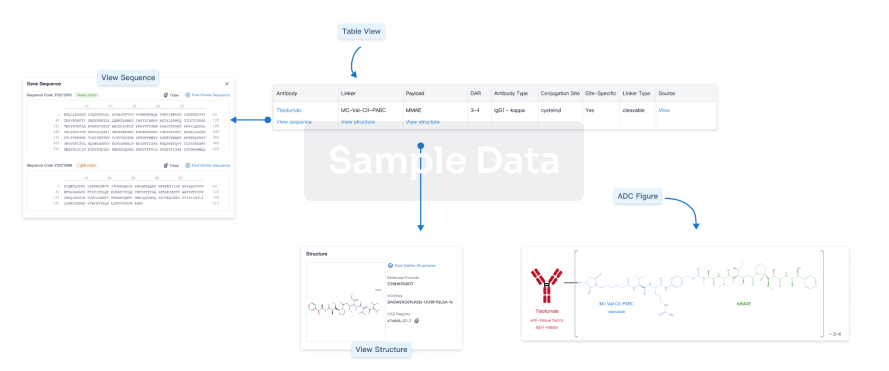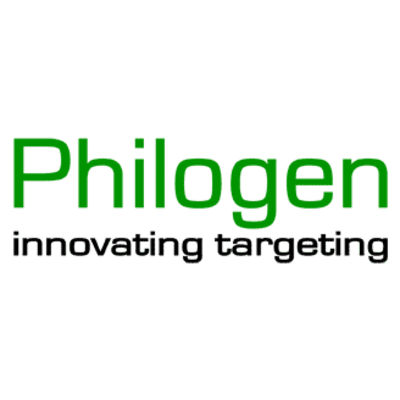Allogeneic stem cell transplantation (alloSCT) is still one of the most powerful tools for the treatment of hematol. malignancies.1 The immune-mediated graft-vs.-tumor (GVT) effect endows it with the potential to cure malignancies refractory to all other treatments.Nevertheless, it is associated with the risk of donor cell-mediated graft-vs.-host disease (GVHD), which mainly contributes to its relevant morbidity and lethality.In theory, the GVT effect might be enhanced by immune checkpoint inhibitors such as ipilimumab (anti-cytotoxic T-lymphocyte-associated protein 4), nivolumab (anti-programmed cell death 1, PD1) or pembrolizumab (anti-PD1), by releasing the brakes on GVT conveying tumor-suppressed lymphocytes.2 Nevertheless, severe graft-vs.-host (GVH) reactions might be unleashed as well.While preliminary data demonstrated no significantly increased GVHD in patients treated with ipilimumab post alloSCT,3 there is still substantial concern regarding the safety of PD1 inhibitors in this setting.In fact, increased GVHD-related lethality has been demonstrated in a murine model of acute GVHD when blocking PD-L1.4 Recently, a report on a patient receiving pembrolizumab for malignant melanoma about 20 years after alloSCT reported no development of GVHD.5 However, there were no data on donor chimerism reported and lack of donor immune cells might be a reasonable cause for lack of GVHD development.Hodgkin's lymphoma (HL) is a neoplastic disease of lymphoid origin, that can initially be cured in >75% of patients using chemotherapy, often followed by consolidating radiation.6 Relapsed or refractory (r/r) patients might be salvaged by high-dose therapy and autologous stem cell transplantation.After high-dose therapy, the antibody-drug conjugate brentuximab vedotin (BV) demonstrated very promising results both as consolidation and salvage treatment and is approved in this setting.7, 8 In highly refractory cases alloSCT is considered as a therapeutic option in eligible patients.9 Recently, checkpoint inhibition by nivolumab demonstrated a remarkable overall response rate of 87% including 17% complete remissions (CR) in 23 patients with r/r HL.10 The benefit of PD1 inhibition in this setting is furthermore supported by preliminary results of pembrolizumab in 15 r/r patients achieving similar responses.11 While the latter trial allows the inclusion of patients 5 years post alloSCT, no such patient has been reported yet.Here, we report the first patient to our knowledge successfully treated with nivolumab after alloSCT.In May 2012 an 18-yr-old man was diagnosed with classical HL involving mediastinal and hilar lymph nodes as well as the middle lobe of the lung corresponding to a stage IV B (fever).Risk factors according to the German Hodgkin Study Group classification system included an erythrocyte sedimentation rate above 30 mm/h with B symptoms, a mediastinal mass on chest X-ray measuring more than one-third of the thoracic diameter (21/31 cm) and extranodal involvement (lung).Following prephase treatment with prednisolone, the patient received six cycles BEACOPP-escalated (bleomycin, etoposide, adriamycin, cyclophopshamide, vincristine, prednisolone and procarbazine).In Oct. 2012, final examination by 18F-fluorodeoxyglucose (FDG)-positron emission tomog. (PET)/computed tomog. (CT) demonstrated a CR of the mediastinal and hilar lymph nodes, but metabolically active paramediastinal residuals in the middle lobe.Unfortunately, the disease immediately progressed even before consolidating radiotherapy could be initiated.The patient received two cycles of DHAP (dexamethasone, high-dose cytarabine and cisplatin) complemented by two cycles of Dexa-BEAM (dexamethasone, carmustine, etoposide, cytarabine and melphalan) due to insufficient response on interim staging, followed by high-dose BEAM and autologous stem cell transplantation.This achieved a partial remission with residual metabolically active lesions in the mediastinum and in the right lung that were subjected to radiotherapy with 30.6 Gy.Only 3 wk after completion of radiotherapy in August 2013, the patient was again submitted to our department with fever.Staging demonstrated multifocal progressive disease, which was histol. confirmed by mediastinoscopic lymphadenectomy.At that point, a search for a matched unrelated donor for alloSCT was initiated.As a bridge to transplant the patient received five cycles of BV, resulting in a mixed response on 18F-FDG-PET/CT with regressive nodal disease, but progressing lymphoma lesions in the lung.In Dec. 2013, following conditioning with treosulfan (3 × 14 g/m2), fludarabine (5 × 30 mg/m2) and antithymocyte globulin (2 × 20 mg/kg), the patient was transplanted from an HLA-matched unrelated donor.There was no development of acute or chronic GVHD post transplantation.However, after an initial minor response, his disease already progressed 2 mo after transplantation.Considering this short response, we decided against the use of donor lymphocyte infusions (DLI).Treatment with BV was resumed with no response after 3 cycles.In July 2014, an exptl. treatment with a single dose of the vascular-targeting radioimmunoconjugate 131I-L19-SIP (2.2 GBq) that has previously demonstrated marked responses in refractory cases of HL (reference12) led to a good response of the preexistent lesions, but multiple new lesions at previously non-involved sites developed.The patient was treated with CEVD (lomustine, etoposide, vindesine, dexamethasone) chemotherapy, again leading to a mixed response with regressive intrathoracic and retroperitoneal lesions, but new liver and bone lesions.At that time, the patient's general condition progressively deteriorated accompanied with nausea, loss of appetite, severe B symptoms and significant loss of weightHe was bedridden most of the time, corresponding to a Karnofsky performance index of only 30%.Considering the high response rates in r/r HL, recently reported by Ansell et al.,10 we decided to initiate an off-label therapy with the anti-PD1 antibody nivolumab.The patient consented and received a single dose of nivolumab at 3 mg/kg (approximated to 200 mg absolute) in June 2015.Treatment was well tolerated with mild fever during the first 2 h after application being the only side effects.Within the first week after infusion, the patient's B symptoms disappeared and his clin. condition drastically improved over the following weeks (Karnofsky performance index 90%).Most importantly, there was no clin. evidence of GVHD induction.An 18F-FDG-PET/CT performed 4 wk after infusion revealed a complete metabolic response (Figure 1) and therapy with nivolumab is currently being continued.Of note, there was an unspecific FDG uptake in some parts of the colon after nivolumab.Although this could have many causes, including enteritis or even physiol. peristalsis, an unspecific T-cell activation causing a subclin. GVH reaction in the gut cannot be excluded.13 Chimerism analyses showed a complete donor cell chimerism (100%) in peripheral blood during the whole treatment period after alloSCT.Despite the generally favorable prognosis of HL, the prognosis of primary refractory patients, including those relapsing within 3 mo after first-line treatment, is poor, with a 5-yr overall survival of only 26%.6 Nevertheless, some of them can still profit from alloSCT with reduced intensity conditioning, mainly due to a GVT or 'graft-vs.-Hodgkin's-lymphoma' effect.6, 9, 14 Patients relapsing after alloSCT might be treated with DLI and/or BV, but supporting evidence is scarce.9 Recently, some studies demonstrated enhanced expression of PD-L1 in HL due to 9p24.1 amplification, chromosomal rearrangements and Epstein-Barr virus infection.2 This conceivably results in suppression of an anticancer immune response, as supported by the impressive therapeutic potential of PD1 inhibitors in r/r HL patients.10, 11 However, while it appears particularly appealing to reverse the suppression of allogeneic GVT effects with PD1 inhibition in the situation of HL relapse after alloSCT, special caution has to be taken in the context of an allogeneic immune system given the role of the PD1 axis in the pathophysiol. of GVHD as well.4 In the presented case of a patient with HL refractory to multiple lines of therapy including alloSCT and BV, nivolumab achieved a remarkable and fast response, suggesting PD1 inhibition to be a powerful means for unleashing the GVT effect in the immunosuppressive microenvironment of HL.However, we did not perform mechanistic studies and another potential cause might be a disruption of the HL supporting infiltrating leukocytes independent of a GVT effect.Importantly, despite recent concerns, there were no signs of GVHD induction in our patient.While the mice in the study of Saha received PD1/PD-L1 inhibition from day one after transplantation,4 our patient received nivolumab 19 mo after alloSCT.Thus, GVHD might be more responsive to PD1/PD-L1 inhibition during the early phase of transplantation potentially triggering severe GVH reactions in the context of conditioning-related inflammation of host tissues.In addition, our patient had never developed signs of GVHD post transplantation and patients with a history of GVHD might be at higher risk of GVHD exacerbation by releasing the brakes on existing alloreactive cells.Furthermore, follow-up is short and it is entirely conceivable that GVHD might still occur after months of treatment, similar to immune-related adverse events of checkpoint inhibition in non-transplanted patients.15 Nevertheless, more established post-alloSCT treatments such as DLIs are also associated with the risk of GVHD exacerbation.16 Thus, it seems reasonable to investigate nivolumab in a larger group of patients in this desperate situation.However, its regular use in this setting cannot be recommended on the basis of a single experience.








